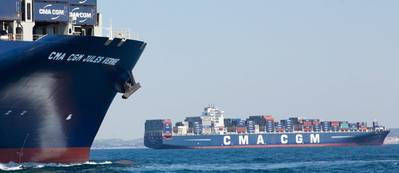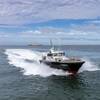CMA CGM to Apply Low Sulfur Surcharge
CMA CGM said it will implement a low sulfur surcharge on all its trades in Emission Control Areas (ECAs) and for all cargos as of January 1, 2015.
MARPOL Annex VI regulations for the prevention of air pollution from ships assign Sulfur Oxides (SOx) Emission Control Areas (ECA) with more stringent controls on sulfur emissions. Stricter regulations covering the sulfur content of fuel oil will be strengthened by local regulators in the European Union, U.S. and Canada.
First implemented in the Baltic Sea more than 10 years ago, ECAs have subjected oceangoing vessels to stricter regulations, both at a global and regional level. Over the years, ECAs have been extended to cover the English Channel and North Sea, as well as North American east and west coasts and the Caribbean Sea, where the maximum sulfur content has been gradually reduced from 4.5% to just 1% to date. In 2015 IMO regulations will set new sulfur limits at 0.1%, which according to CMA CGM presents significant challenges for the entire maritime industry.
The directive will require ships to use marine diesel fuel with maximum allowed sulfur content of 0.1% in ECAs, which is more expensive than low sulfur fuel oil, which has 1.0% sulfur content.
CMA CGM said the higher price represents an additional cost of more than $100 million every year for the group, inflating expenditure. Furthermore, technical issues when running the main engine with diesel oil, such as temperature, viscosity or the size of the diesel oil tank, will command to upgrade of some vessels to comply with the new rules, further generating extra costs.
As a consequence, CMA CGM will implement a Low Sulfur Surcharge as from January 1, 2015.
Additionally, the group said it will continue working on technical innovations to comply with the low sulfur fuel (LSF) regulation.













